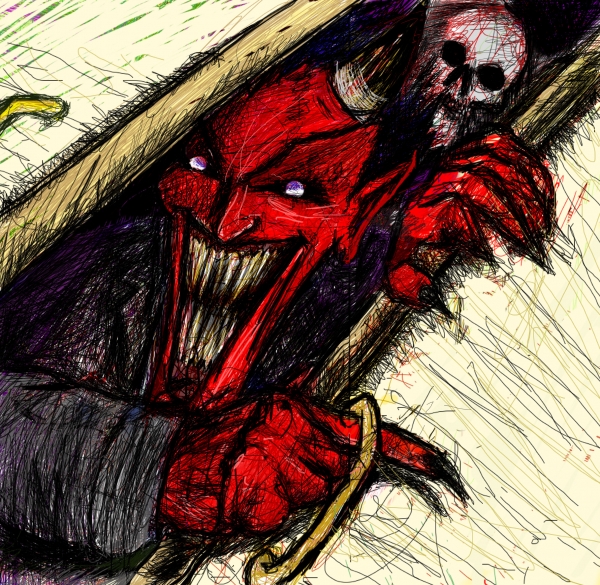
A specific form of possession I would like to discuss separately is demonic possession. Such cases are usually highly distressing and challenging for both the individual affected and the loved ones around him or her. Interestingly, possession by evil spirits or elementals has been rife in the history of Western civilization, particularly in European countries during the High Middle Ages and the Renaissance periods, and the actual symptoms appear to be uniform irrespective of racial or ethnic identity. According to modern psychiatrists and clinicians, there are three categorizations of demonic possession: schizoid disorder or schizophrenia, in which the prevailing mental illness is wrought by the dogmatic dualistic beliefs of modern monotheistic religions like Christianity, Judaism and Islam so that the patient becomes convinced that he or she is really possessed by a malevolent disembodied entity; latent possession whereby demonic presence is diagnosed through preliminary exorcism and a cure sought through a subsequent exorcism; and an explicit form of spontaneous possession that is one and the same with hysterical neurosis.
Details pertaining to the first type were described at length by Rudolf Kriss and Hubert Kriss-Heinrich when they visited a monastery consecrated to Saint Gerasimos on the isle of Cephalonia in the mid-twentieth century. According to their eye-witness reports, the monastery housed individuals that had been disenfranchised from the rest of society–patients suffering from acute psychosis and other mental illnesses. The state of their psychological and physical health was lamentable, partly because they had been mistreated and bound in chains and partly because their incapacitating conditions which had worsened with time were never addressed. When priests living in the monastery would perform various rites in their presence, their conditions worsened tenfold and they would try to break out of their enclosures whilst blurting out aloud an array of profanities and insults. Kriss and Kriss-Heinrich came to the conclusion that the patients were appropriating a role unconsciously appointed to them by the Greek Orthodox Church and that the patients were no more possessed by a demon than what a lower animal like a dog was by philosophical speculation. In actual fact it appears that those that experienced remission did so because they perceived that the Orthodox priests had succeeded in overcoming evil and loosening Satan’s reigns on their souls. One of them admitted to Kriss and Kriss-Heinrich that he was merely fulfilling actions that were expected of him.
On the other hand cases that can be categorized as type three demonic possessions were still rather widespread in Greece until a few centuries ago. A psychiatrist by the name of Dr. Peter Hartocollis who also sojourned on Cephalonia at about the same time as Kriss and Kriss-Heinrich went to the trouble of recording multiple cases of latent possession that he identified and treated as acute psychosis. Hartocollis found that all cases were quite uniform: patients reacted violently at the sight of the holy cross, an icon of the Virgin Mary and the Babe Jesus, or other religious paraphernalia; expulsion of the malevolent demon or spirit was heeded by something breaking or cracking; and the “cured” individual made a heartfelt offering to the monastery or church in which the successful exorcism was performed before departing. Some rustics profess that the spasms, convulsions, and analogous phenomena experienced by the patient during the length of the exorcism are in fact expressions of demonic wrath which escalate in intensity simply because the entity knows that any one-on-one battle against the will of God shall inevitably be lost. Modern dynamic psychiatry opts for a more inwardly-turned interpretation and perceives this phenomenon as resistance to the therapeutic agent and brief transference neurosis.
In retrospect, it appears the tide of hysteria which had swept anecdotes of demonic possession and witchcraft into our collective consciousness began to recede and disappear during the intense period of societal reform and scientific advancement known as the Age of Enlightenment. The pull towards a cosmogony that was rational and logical in nature demolished unfounded superstitions of the immediate past such as the belief in the devil upon which the church dependent upon for its power. Without this disembodied force and his projections, phenomena of spirit possession and exorcism were rendered defunct across all Western cultures and individuals save perhaps in those refusing to part with belief in the supernatural realm of spirits. Foremost among the latter were the Romanticists, the Pietists, some metaphysical thinkers, and anyone opposed to the disenchantment of an animistic worldview.









